

William Stopford
2025 Lexus NX350h Sports Luxury FWD review
1 Month Ago

Journalist
The sixth-generation Honda CR-V is the largest yet, and includes a much classier interior and updated drivetrains.
Unveiled overnight in the US, the design of the new crossover isn’t too much of a surprise as we’ve already seen patent diagrams and leaked undisguised vehicles out of China.
Honda says it can’t confirm exact launch timing, as it’s “more than 12 months away”.
Overall the design is an evolution of today’s car, but with a more formal air. The design of the large hexagonal grille and headlights show a kinship with the global HR-V, while the L-shaped tail-lights are a clear link to the outgoing model.
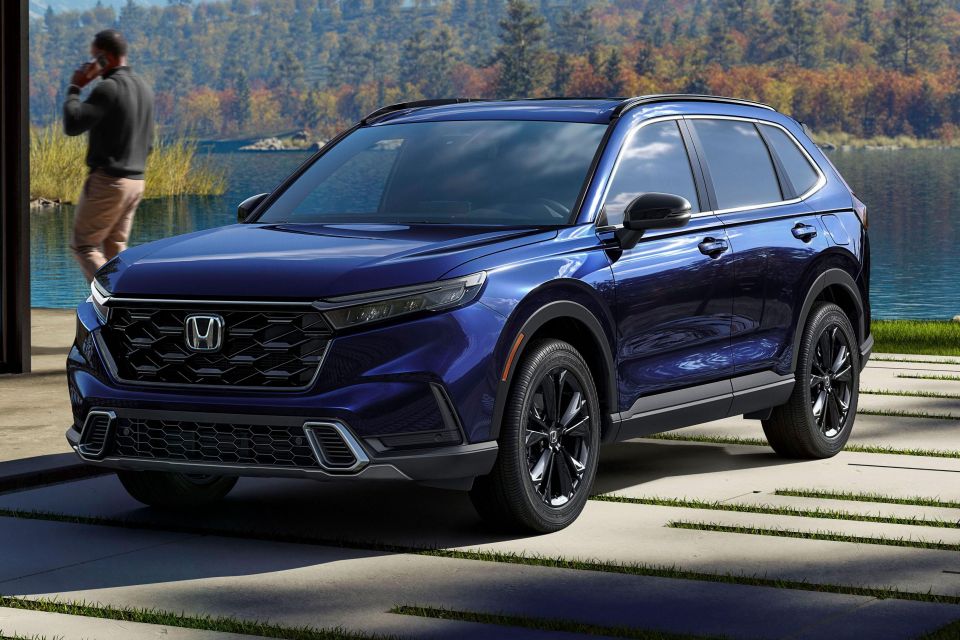
Only the Sport and Sport Touring variants are pictured here, both of which feature blacked out grilles, mirrors, vents, wheels, and lower body mouldings.
The Sport Touring version has subtle satin chrome finishes for the grille wings that jut into the headlights, rear bashplate-style element, and lower air intake pods.
Honda says the look is more “rugged and sophisticated”, thanks mainly to a stronger shoulder line, and the base of the A-pillar sitting 122mm further back, 36mm lower, and 71mm further out.
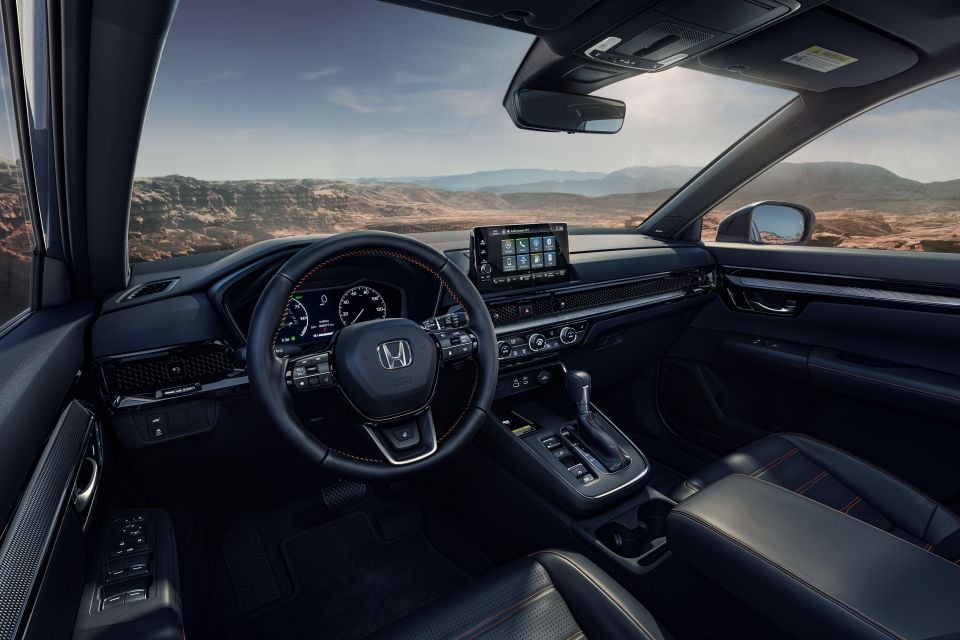
Inside, the CR-V dashboard is highly influenced by the latest Civic and American HR-V with a long honeycomb mesh strip running the width of the car and disguising the location of the vents.
Knurled dials grace the freestanding infotainment screen — 7.0-inch on base models, and 9.0-inch on higher grades — and climate control section. Wireless Android Auto and Apple CarPlay comes with the larger screen, while the smaller display only supports wired smartphone mirroring.
The instrument panel features a physical speedometer on the right, and a 7.0-inch digital display on the left, which includes a fully digital tachometer on turbo models and power flow diagram on hybrid variants.

In the US the base engine is a revised version of the 1.5-litre turbocharged four-cylinder engine. Maximum power remains unchanged at 142kW, although it’s now generated at 6000rpm, 400rpm higher than before.
While peak torque remains at 243Nm, the curve is now wider, starting at 1750rpm — compared to 2000rpm before — and ending at 5000rpm.
A continuously variable transmission (CVT) is standard with the turbo, and it comes with a “step-shift mode” that simulates traditional gears under hard acceleration.
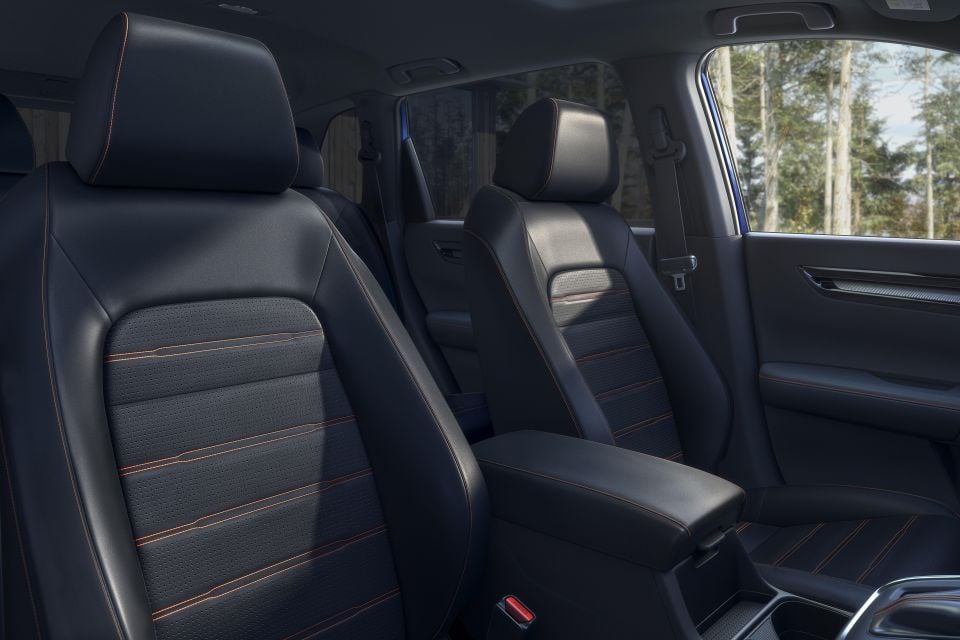
An improved 2.0-litre hybrid is expected to account for 50 per cent of sales in the US. The Atkinson-cycle four-cylinder engine has been upgraded with direct injection, while the two electric motors have been repositioned to sit side-by-side, allowing for the fitment of a larger, torquier traction motor.
Total system output is 152kW, an increase of 2kW, while the electric motor is said to produce 335Nm, an improvement of 20Nm.
Continuous maximum speed has been increased from 137km/h to 185km/h, while the “linear shift control” system allows the petrol engine revs to rise and fall as they would do in a non-electrified car with a traditional automatic transmission.
Both drivetrains are available with an all-wheel drive system that can send up to 50 per cent of the car’s torque to the rear wheels. Hill descent control with a driver-selectable speed is standard on all models, regardless of drivetrain.
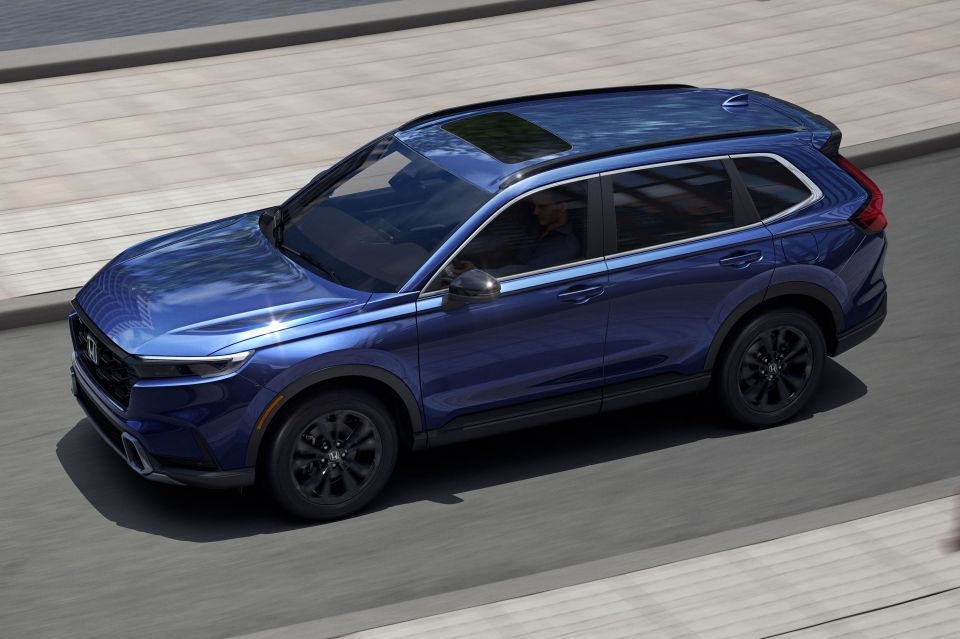
The new CR-V is 4694mm long, 1864mm wide, 1692mm tall, and rides on a 2700mm wheelbase, meaning the sixth-generation car is 69mm longer, 10mm wider, 2mm taller, and has a 41mm longer wheelbase than the outgoing model.
This increase in size not only means more space for CR-V occupants, but will also allow Honda to slot in a model in between the global HR-V (sold in Australia) and the CR-V. This model is expected to be badged ZR-V, and should be almost identical to the American HR-V.
Both CR-V drivetrains have larger boots –1028L when measured to the ceiling — and on the turbo this can be expanded by a further 85L by lowering the boot floor. Drop the 60/40 split-fold rear seats, and storage space jumps to 2166L.
It should be noted American CR-Vs are five-seat only, while international models will be offered in both five- and seven-seat guises.
Stateside the CR-V rides on 18-inch alloy wheels 235/60 tyres, or 19-inch rims with 235/55 rubber. The CR-V’s suspension setup consists of MacPherson struts up front, and a multi-link system at the rear.
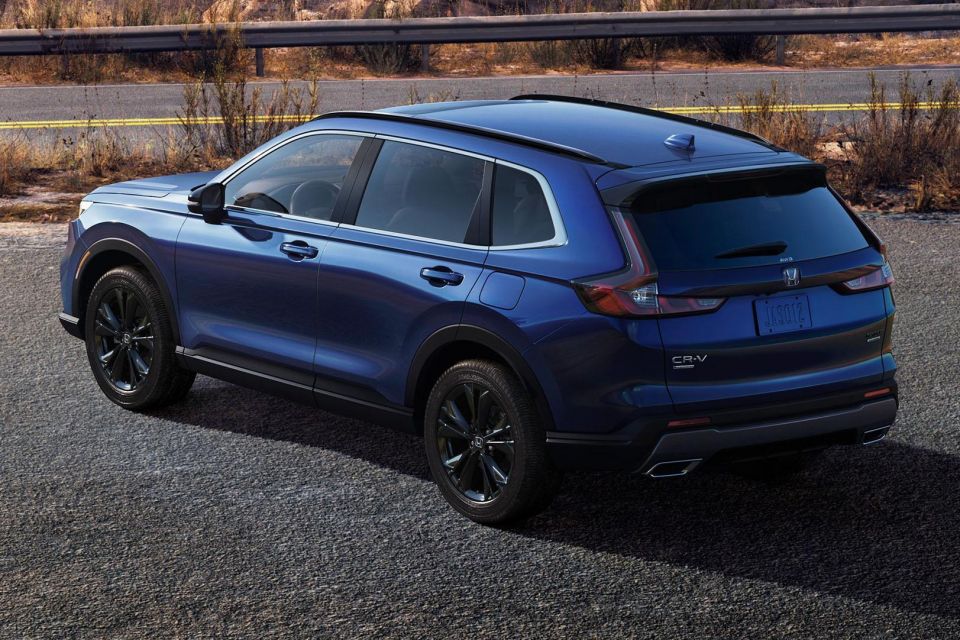
On the safety front the CR-V’s sensors have a wider field of view, with the front-facing camera boasting a 90-degree viewing range, and the radar said to have a 120-degree field of view.
In America blind-spot monitoring is now standard, joining adaptive cruise control, autonomous emergency braking, and lane-keep assist. New safety elements include traffic sign recognition, traffic jam assist, and driver attention monitoring.
Other available features include a 15W smartphone wireless charging pad, and 12-speaker Bose sound system.
Honda has begun manufacturing the new CR-V at three factories across North America, with sales set to begin soon. It’s unclear when other plants around the world will begin making the sixth-generation CR-V, and when the crossover will be available in Australia.
MORE: Everything Honda CR-V
Where expert car reviews meet expert car buying – CarExpert gives you trusted advice, personalised service and real savings on your next new car.
Derek Fung would love to tell you about his multiple degrees, but he's too busy writing up some news right now. In his spare time Derek loves chasing automotive rabbits down the hole. Based in New York, New York, Derek loves to travel and is very much a window not an aisle person.


William Stopford
1 Month Ago
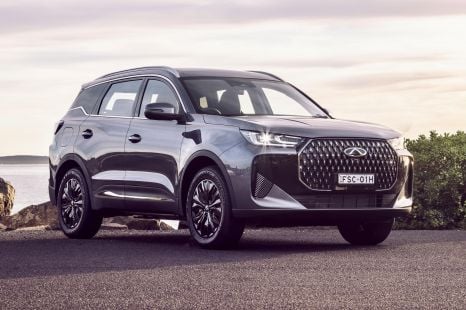

Max Davies
29 Days Ago


Max Davies
16 Days Ago
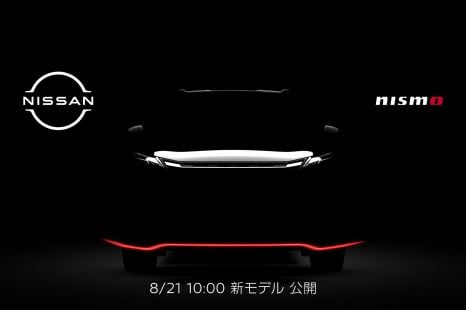

William Stopford
5 Days Ago


William Stopford
4 Days Ago
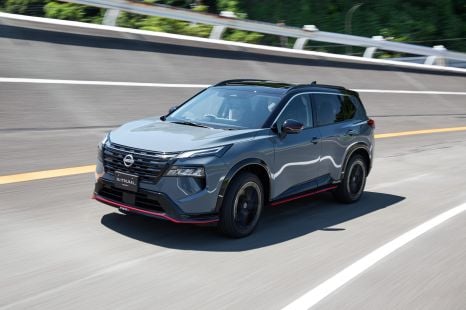

William Stopford
4 Days Ago